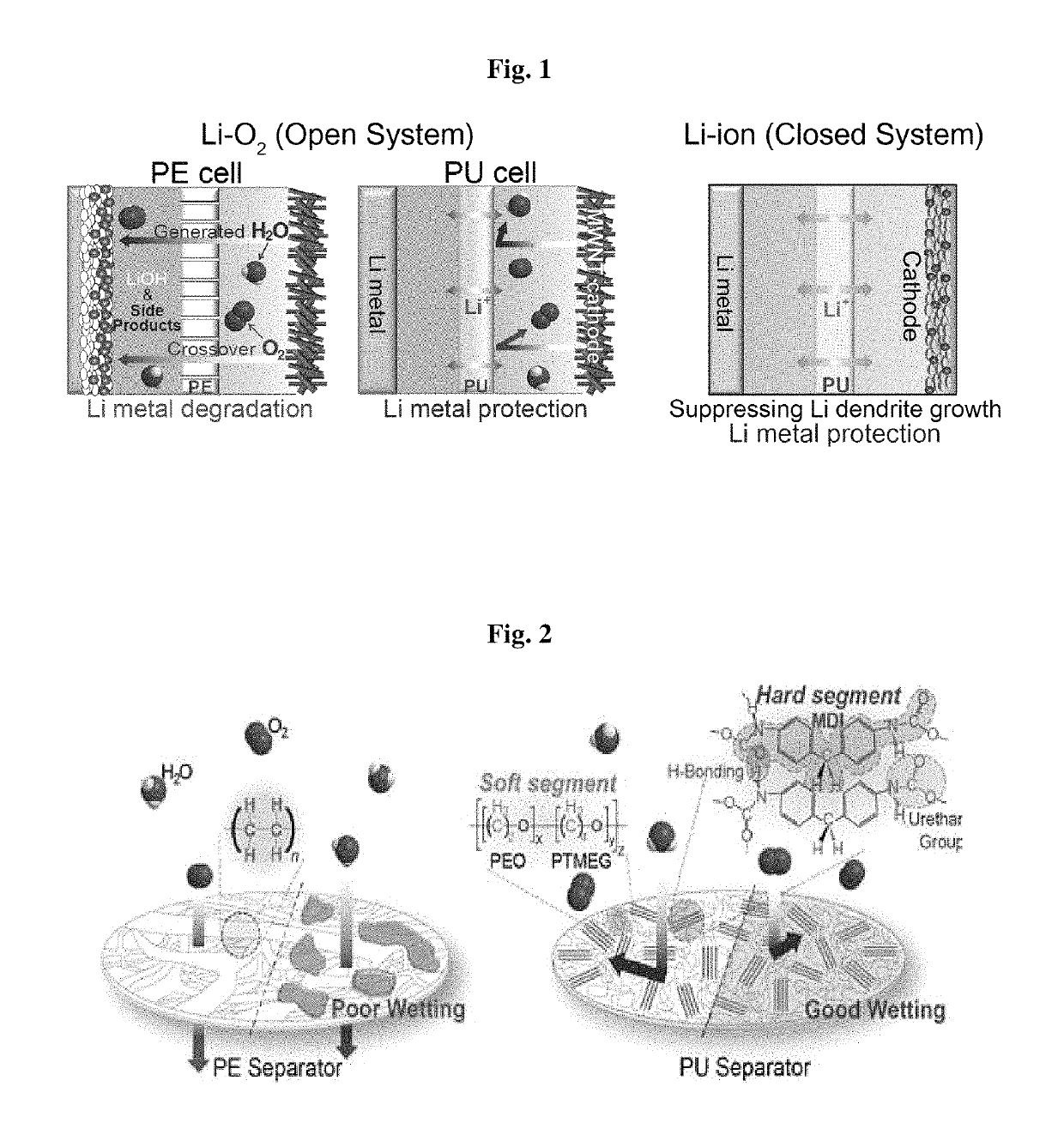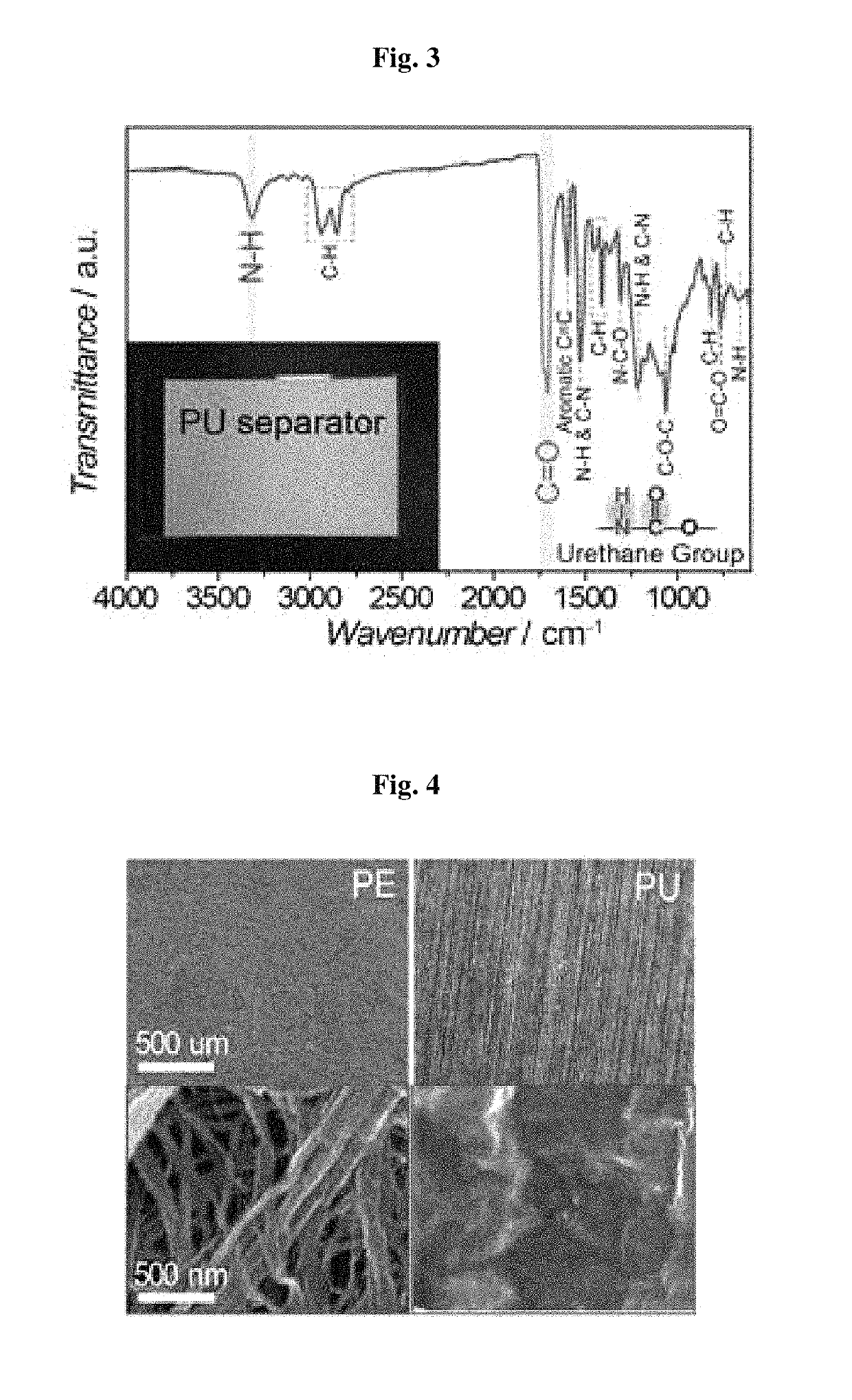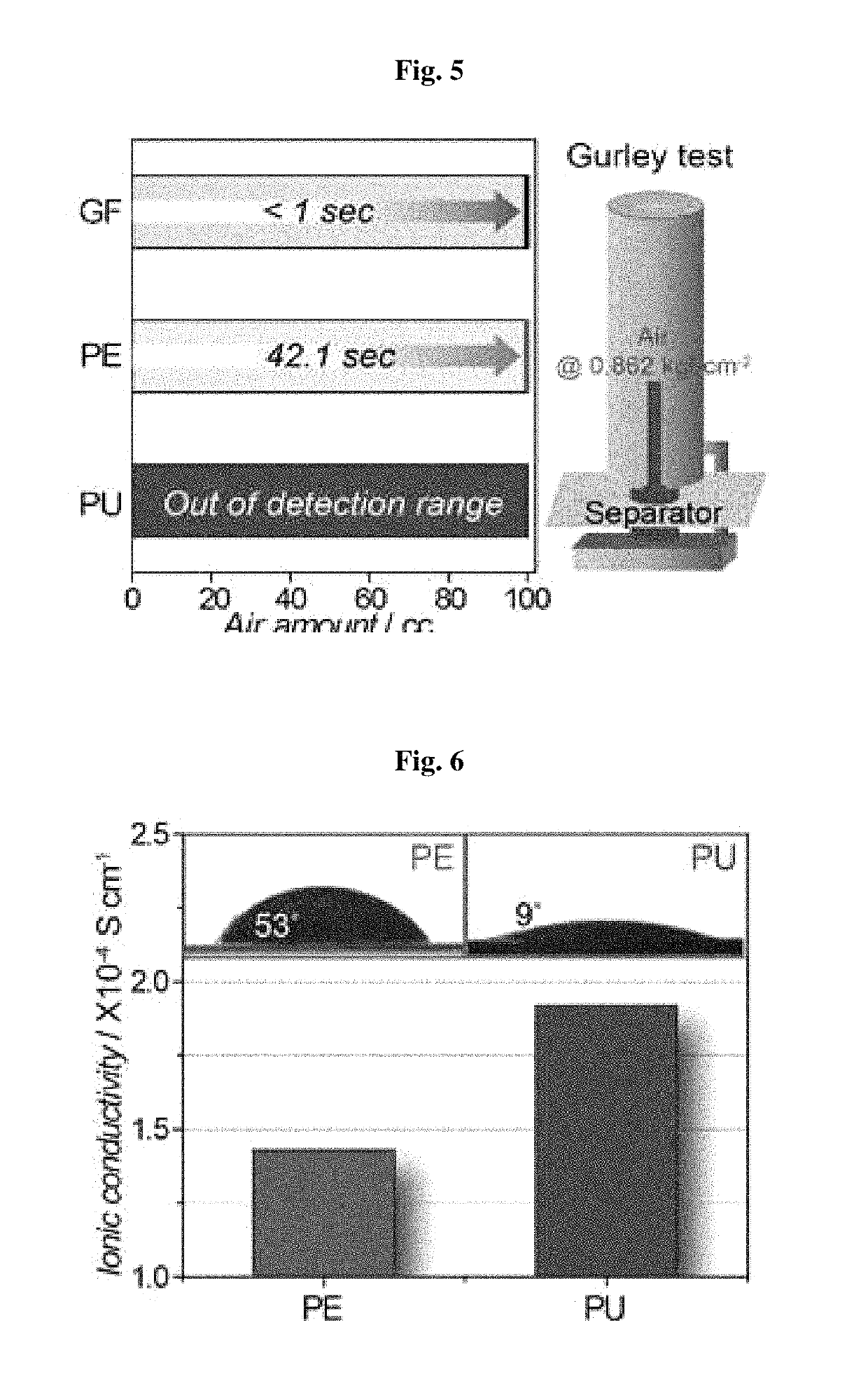Poreless separator for lithium air battery
a lithium air battery, poreless technology, applied in secondary cell servicing/maintenance, batteries, cell components, etc., can solve the problems of limited cycle characteristics, lithium metal stability during operation remains problematic, durability caused, etc., to prevent moisture and oxygen permeation, accelerate lithium ions diffusion, and high stability
- Summary
- Abstract
- Description
- Claims
- Application Information
AI Technical Summary
Benefits of technology
Problems solved by technology
Method used
Image
Examples
example
[0094]First, c-PANS as an electrode material is prepared according to the known procedure. Briefly, 50 g of sulfur element (Aldrich) and 12.5 g of PAN (M.W.=150000, Aldrich) are mixed with each other by a ball mil process (300 rpm, 12 h), and the resultant mixture is fired in a tube furnace (450° C., 6 h, N2 flows at 500 sccm, lapping rate=10° C. min−1). Elemental analysis of c-PANS reveals that the sulfur content is about 40 mass % (EA, Ondo Science). In the preparation of a sulfur electrode, c-PANS, denka black and SBR / CMC as a binder are dispersed in deionized water (8:1:1=W:W:W). The resultant slurry is cast onto nickel-coated polyester fibers by using the above-mentioned doctor blade process. Finally, the electrode is dried in a vacuum oven (80° C., 24 h). The mass loading of c-PANS in FIG. 44 was 8 mg cm−2. The lithium metal anode surface-coated with LixNOy is obtained by carrying out coating through the immersion of lithium metal (Honjo Chemical Co., diameter=13 mm) in 5 mL o...
PUM
| Property | Measurement | Unit |
|---|---|---|
| diameter | aaaaa | aaaaa |
| pressure | aaaaa | aaaaa |
| Gurley time | aaaaa | aaaaa |
Abstract
Description
Claims
Application Information
 Login to View More
Login to View More - R&D Engineer
- R&D Manager
- IP Professional
- Industry Leading Data Capabilities
- Powerful AI technology
- Patent DNA Extraction
Browse by: Latest US Patents, China's latest patents, Technical Efficacy Thesaurus, Application Domain, Technology Topic, Popular Technical Reports.
© 2024 PatSnap. All rights reserved.Legal|Privacy policy|Modern Slavery Act Transparency Statement|Sitemap|About US| Contact US: help@patsnap.com










